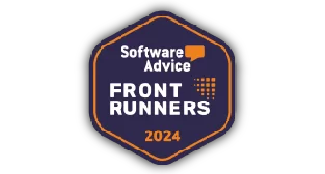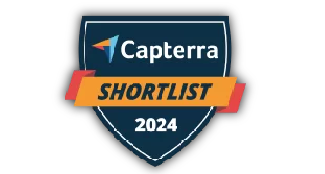Work meetings are a key tool for ensuring communication, coordination, and success in any company. Depending on the goal to be achieved, there are different types of meetings that can be developed. Below, we explore each type in detail, highlighting their characteristics, advantages, and examples to help you identify which is best suited to your team’s needs.
Informative meetings
Informative meetings are designed to share important information with team members. These meetings are typically one-way and aim to ensure all attendees are updated on relevant news, changes, or updates within the organization.
Characteristics of informative meetings:
- Generally short and concise.
- Do not require active interaction from attendees.
- Ideal for announcing organizational changes, project launches, or business results.
Example:
A CEO informs their team about the financial results of the last quarter and strategies for the next one.
Advantages:
- Ensures team alignment.
- Saves time by communicating to everyone simultaneously.
- Reduces the spread of incorrect or misinterpreted information.
Decision-making meetings
These meetings focus on evaluating options and selecting a specific course of action. They involve discussion, analysis, and consensus among participants.
Characteristics:
- Require active participation from all attendees.
- Use a structured approach to evaluate the pros and cons of options.
- The ultimate goal is to reach a consensus.
Example:
The marketing team decides which advertising campaign to implement for a new product.
Advantages:
- Encourages active team participation.
- Allows for more informed and balanced decisions.
- Promotes shared responsibility.
Problem-solving meetings
This type of meeting is organized when a challenge or issue arises that needs resolution. The focus is on identifying the root cause of the problem and proposing solutions.
Characteristics:
- Require in-depth and detailed analysis of the issue.
- Often include tools like mind maps or root-cause analysis.
- Require interdisciplinary participation.
Example:
Resolving recurring supply chain issues to avoid delivery delays.
Advantages:
- Rapid identification of critical problems.
- Generation of collaborative solutions.
- Encourages critical and creative thinking.
Follow-up meetings
These meetings are essential for monitoring the progress of projects or assigned tasks. They help assess whether initial objectives are being met and make adjustments if necessary.
Characteristics:
- Conducted on a regular basis.
- Include reviews of goals, deadlines, and allocated resources.
- Progress and obstacles are documented.
Example:
A weekly meeting to review the progress of a technology implementation project.
Advantages:
- Ensures goal fulfillment.
- Detects deviations and corrects them promptly.
- Reinforces ongoing collaboration between teams.
Planning meetings
These meetings are designed to define the objectives, resources, and deadlines necessary for a specific project or task.
Characteristics:
- Focus on establishing an action plan.
- Involve key decision-makers from each area.
- Help prioritize tasks and resources.
Example:
Planning the annual activities for the human resources department.
Advantages:
- Facilitates more efficient organization.
- Reduces uncertainties at the start of projects.
- Aligns all participants toward common goals.
Feedback or evaluation meetings
These meetings focus on assessing the performance of individuals, teams, or projects, providing constructive feedback for improvement.
Characteristics:
- Based on the analysis of data and concrete results.
- Include both positive feedback and areas for improvement.
- Promote open communication.
Example:
Quarterly evaluation of employee performance.
Advantages:
- Enhances individual and team performance.
- Strengthens motivation and commitment.
- Identifies development opportunities.
Creative or innovation meetings
These meetings are designed to generate new ideas and solutions, fostering creativity among participants.
Characteristics:
- Relaxed environment that encourages free expression.
- Use of group dynamics or brainstorming techniques.
- Focused on innovation and out-of-the-box thinking.
Example:
A session to brainstorm new products or services based on market trends.
Advantages:
- Promotes creativity within the team.
- Helps identify new opportunities.
- Fosters a dynamic and motivating work environment.
Emergency meetings
These meetings are held when a critical problem or situation arises, requiring an immediate response.
Characteristics:
- Convened with short notice.
- Focused on rapid solutions.
- Involve only key decision-makers.
Example:
Addressing a reputational crisis after a social media incident.
Advantages:
- Enables a quick and effective response.
- Minimizes the impact of critical issues.
- Strengthens the team’s response capacity.
Social or team meetings
These meetings aim to strengthen interpersonal relationships within the team, creating a more collaborative environment.
Characteristics:
- Have an informal focus.
- May include recreational activities.
- Encourage interaction and team cohesion.
Example:
A team-building event in an offsite location.
Advantages:
- Strengthens team spirit.
- Improves interpersonal communication.
- Boosts employee motivation and commitment.
Purpose of a work meeting
Work meetings are essential for the effective management of teams and projects, serving as a cornerstone for internal communication and organization within a company. These meetings are instrumental in setting clear objectives, ensuring that all participants understand the purpose of tasks and associated expectations. Additionally, they provide an ideal platform for problem-solving, where diverse ideas and perspectives converge to produce innovative and effective solutions.
Work meetings are also critical for decision-making, enabling leaders and teams to evaluate options, discuss alternatives, and select the best strategies in a collaborative environment. Furthermore, these sessions foster communication by ensuring that information flows seamlessly across different levels and departments of the organization.
Benefits:
- Team alignment: Ensures all participants work towards the same goals, minimizing misunderstandings and boosting efficiency.
- Encourages idea-sharing: Well-organized meetings create a conducive environment for creativity and innovation.
- Improves decision-making: Collective discussion helps evaluate options from multiple perspectives.
- Strengthens organizational culture: Encourages employees to share ideas, boosting engagement and a sense of belonging.
- Tracks progress: Enables teams to review project advancements and make real-time adjustments as needed.
Disadvantages:
- Time wastage: Poorly planned meetings can drag on without reaching concrete conclusions.
- Lack of focus: Without a clear agenda, participants may deviate from the primary objective.
- Hidden costs: Every minute spent in a meeting is time not directly invested in productive tasks.
- Over-reliance on meetings: Excessive meetings can lead to analysis paralysis, delaying critical decisions.
Using a tool like Hybo can optimize meeting management, from booking spaces to analyzing time spent, ensuring each session is productive and efficient.
How to choose the right type of meeting for your team
Choosing the right type of meeting is crucial to maximize its effectiveness and achieve the set objectives. This decision should be based on key factors such as the nature of the topic, the number and profile of participants, and the expected outcome. For instance, an informative meeting is perfect for communicating organizational changes, while a problem-solving meeting is better suited for addressing specific challenges.
A defining factor is the meeting’s objective. Clearly outlining the purpose before inviting participants is essential. Questions like «Do we want to make a decision?», «Do we need to solve a problem?», or «Are we looking to generate creative ideas?» can help determine the most suitable format.
Benefits of choosing correctly:
- Time efficiency: Participants know exactly what is expected of them, avoiding unnecessary time wastage.
- Improved productivity: Each meeting type is designed to address specific needs, maximizing results.
- Active participation: When the format aligns with the topic and attendees, meaningful contributions are more likely.
- Clear outcomes: Selecting the correct type ensures objectives are met in a structured and efficient manner.
Disadvantages of an incorrect choice:
- Confusion among participants: An unsuitable format can lead to misunderstandings about roles or contributions.
- Ineffective results: Without the right focus, the meeting may fail to meet its initial objectives.
- Loss of motivation: Attendees may feel demotivated if their time is perceived as undervalued or if meetings lack tangible value.
Hybo: The best tool for effective meeting management
Hybo transforms meeting organization and management into a seamless and efficient process. Our platform offers:
- Space reservations based on equipment needs, such as projectors or interactive screens.
- Integration with Microsoft 365 and Google Workspace, simplifying planning and follow-ups.
- Environment automation: Control lighting and air conditioning at the start of each meeting.
- Digital panels in rooms to check availability and book instantly.
- Invite external participants directly through the app.












